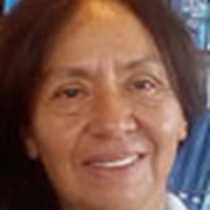Santa Cruz Island
After a relaxed navigation we arrived to a beautiful, mostly inhabited green island (second largest of Galápagos) with one big city, Puerto Ayora. Though the guests knew that we would meet civilization here, many of them could not believe that the human race is also able to survive in this hidden corner of Santa Cruz Island.
It was a surprise for some of our guests to find out that tortoises are increasing their number at the incubators through the Darwin Station’s breeding program. The Research Station is making efforts to protect this emblematic creature, from which the islands take their name
After visiting several corrals, we could recognize the different shell shapes including dome, saddle and intermediate, which are all an adaptation to the different environments of the Galápagos islands.
Everyone had time off for shopping in town following the visit to the Station and before we went to the highlands to visit a lava tunnel and look for giant tortoises in the wild. We counted about 15 wild tortoises! It was very different to see them walking and eating freely in such a beautiful green environment surrounded by grass and big trees. Everybody was impressed by looking at such a heavy and prehistoric type of reptile. All of these tortoises seemed to have different personalities: some shy, others very friendly.
We moved to the Scalesia forest next, located about 1800 feet above sea level, a different and unique vegetation zone, and a good area to see Galápagos orchids and several species of ferns,mosses and many other plants. Different species of Darwin finches were there, and we also saw impressive depressions along the road: the Pit Holes or the “ Twins” – an enjoyable place for everybody. This was the place where we spotted several tree finches.
After such impressive and unforgettable experiences, we came back to Puerto Ayora and returned to our home for the week, the National Geographic Islander.
After a relaxed navigation we arrived to a beautiful, mostly inhabited green island (second largest of Galápagos) with one big city, Puerto Ayora. Though the guests knew that we would meet civilization here, many of them could not believe that the human race is also able to survive in this hidden corner of Santa Cruz Island.
It was a surprise for some of our guests to find out that tortoises are increasing their number at the incubators through the Darwin Station’s breeding program. The Research Station is making efforts to protect this emblematic creature, from which the islands take their name
After visiting several corrals, we could recognize the different shell shapes including dome, saddle and intermediate, which are all an adaptation to the different environments of the Galápagos islands.
Everyone had time off for shopping in town following the visit to the Station and before we went to the highlands to visit a lava tunnel and look for giant tortoises in the wild. We counted about 15 wild tortoises! It was very different to see them walking and eating freely in such a beautiful green environment surrounded by grass and big trees. Everybody was impressed by looking at such a heavy and prehistoric type of reptile. All of these tortoises seemed to have different personalities: some shy, others very friendly.
We moved to the Scalesia forest next, located about 1800 feet above sea level, a different and unique vegetation zone, and a good area to see Galápagos orchids and several species of ferns,mosses and many other plants. Different species of Darwin finches were there, and we also saw impressive depressions along the road: the Pit Holes or the “ Twins” – an enjoyable place for everybody. This was the place where we spotted several tree finches.
After such impressive and unforgettable experiences, we came back to Puerto Ayora and returned to our home for the week, the National Geographic Islander.




